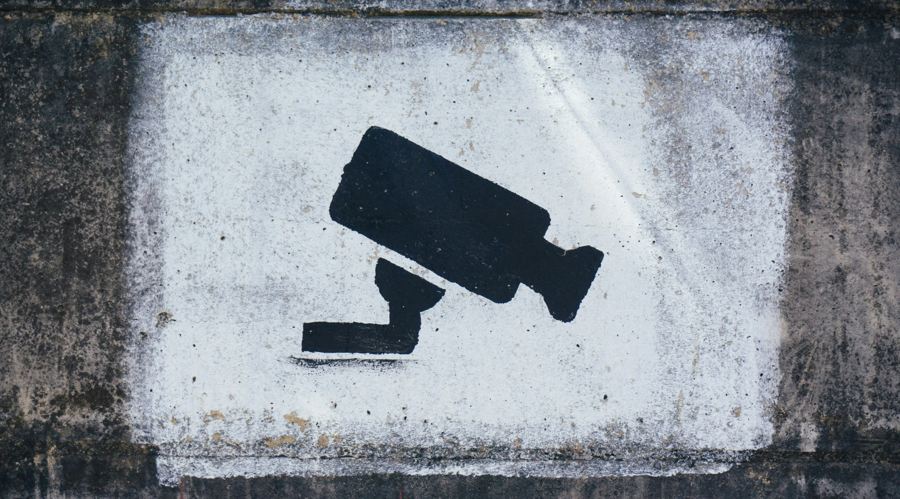
Retail giants are setting their
sights on facial recognition as the next frontier of payment systems, promising a checkout experience as smooth as scrolling
through your social media feed. But this cashless convenience comes
with a hefty price tag: a piece of your privacy.
The
allure of facial recognition at the register is undeniable. Forget fumbling for
your wallet or fishing out a loyalty program app. Biometric systems promise a
frictionless experience, a futuristic twist on the classic burger run.
Companies like PopID are leading the charge, partnering with restaurants like
CaliExpress and Steak ’N Shake to streamline the payment process. Just a quick
look into a camera and your juicy cheeseburger is practically in hand.
However,
beneath the veneer of convenience lies a layer of unease.
Surrendering your
facial data to a fast-food chain feels inherently unsettling. Images that once
resided on your phone’s protected gallery are now fodder for algorithms,
becoming a key that unlocks not just your purchase but potentially a treasure
trove of personal information.
The
specter of data breaches hangs heavy. A single security lapse could expose the
biometric data of millions, transforming a trip to the mall into a recipe for
identity theft. Recent lawsuits against retail giants like Target, already
facing heat for alleged illegal collection of facial data, serve as a stark
reminder of the potential dangers.
Perhaps
even more unsettling is the question of who truly owns your face.
Unlike a
credit card that can be cancelled or replaced, your facial data is an
inseparable part of you. Can you truly opt-out of a system that relies on your
unique biological signature? The answer, for now, remains disturbingly unclear.
Privacy
advocates warn of a domino effect. Facial recognition, once confined to
security cameras in select stores, could become ubiquitous. A quick scan at
checkout today might morph into a system that tracks your every retail move,
building a detailed profile of your habits and preferences. This information
could then be used for targeted advertising, or worse, fall into the wrong
hands.
Proponents
argue that facial recognition is simply the next step in our digital evolution.
They point out that we readily share vast amounts of personal data on social
media platforms, so why balk at a system that streamlines our shopping
experience?
There’s
a crucial distinction, however. Social media is a conscious choice – we
actively choose what information we share. Facial recognition, on the other
hand, could become an unavoidable part of the retail experience, silently
collecting data without our explicit consent.
Furthermore,
alternatives already exist. Contactless payment options offer a
near-frictionless experience without the privacy concerns. And let’s not forget
the classic swipe of a card – a system that protects both our identity and our
anonymity.
The
rise of facial recognition payments presents a critical juncture.
Do we
prioritize speed and convenience, even if it means surrendering a piece of our
privacy? Or do we demand a future where our shopping experience is just that –
a simple transaction, not a data collection exercise?
The
answer lies not with corporations or tech giants, but with consumers.
Their collective voice and their willingness to embrace (or reject) this new
technology, will ultimately determine whether the future of retail involves a
friendly cashier or a cold, calculating algorithm. The choice is theirs: a
checkout smile or a data-driven stare.
But
here’s the twist: what if the true value of facial recognition payments isn’t
for retailers at all?
Consider this – what if the biggest beneficiaries of this
technology are the very companies that provide facial recognition software?
These companies gain access to a vast trove of biometric data, a goldmine for
perfecting their algorithms and expanding their reach. This raises a critical
question: are we simply sleepwalking into a future where our faces become a new
form of currency, unknowingly enriching these tech giants with every purchase?
The
potential benefits of facial recognition payments for retailers seem marginal
at best – a few seconds shaved off checkout times. The potential risks for
consumers, however, are significant. The erosion of privacy, the threat of data
breaches, and the unknown consequences of a world where our faces become a form
of identification – these are the issues we must grapple with before we blindly
embrace the convenience of a checkout stare.
Retail giants are setting their
sights on facial recognition as the next frontier of payment systems, promising a checkout experience as smooth as scrolling
through your social media feed. But this cashless convenience comes
with a hefty price tag: a piece of your privacy.
The
allure of facial recognition at the register is undeniable. Forget fumbling for
your wallet or fishing out a loyalty program app. Biometric systems promise a
frictionless experience, a futuristic twist on the classic burger run.
Companies like PopID are leading the charge, partnering with restaurants like
CaliExpress and Steak ’N Shake to streamline the payment process. Just a quick
look into a camera and your juicy cheeseburger is practically in hand.
However,
beneath the veneer of convenience lies a layer of unease.
Surrendering your
facial data to a fast-food chain feels inherently unsettling. Images that once
resided on your phone’s protected gallery are now fodder for algorithms,
becoming a key that unlocks not just your purchase but potentially a treasure
trove of personal information.
The
specter of data breaches hangs heavy. A single security lapse could expose the
biometric data of millions, transforming a trip to the mall into a recipe for
identity theft. Recent lawsuits against retail giants like Target, already
facing heat for alleged illegal collection of facial data, serve as a stark
reminder of the potential dangers.
Perhaps
even more unsettling is the question of who truly owns your face.
Unlike a
credit card that can be cancelled or replaced, your facial data is an
inseparable part of you. Can you truly opt-out of a system that relies on your
unique biological signature? The answer, for now, remains disturbingly unclear.
Privacy
advocates warn of a domino effect. Facial recognition, once confined to
security cameras in select stores, could become ubiquitous. A quick scan at
checkout today might morph into a system that tracks your every retail move,
building a detailed profile of your habits and preferences. This information
could then be used for targeted advertising, or worse, fall into the wrong
hands.
Proponents
argue that facial recognition is simply the next step in our digital evolution.
They point out that we readily share vast amounts of personal data on social
media platforms, so why balk at a system that streamlines our shopping
experience?
There’s
a crucial distinction, however. Social media is a conscious choice – we
actively choose what information we share. Facial recognition, on the other
hand, could become an unavoidable part of the retail experience, silently
collecting data without our explicit consent.
Furthermore,
alternatives already exist. Contactless payment options offer a
near-frictionless experience without the privacy concerns. And let’s not forget
the classic swipe of a card – a system that protects both our identity and our
anonymity.
The
rise of facial recognition payments presents a critical juncture.
Do we
prioritize speed and convenience, even if it means surrendering a piece of our
privacy? Or do we demand a future where our shopping experience is just that –
a simple transaction, not a data collection exercise?
The
answer lies not with corporations or tech giants, but with consumers.
Their collective voice and their willingness to embrace (or reject) this new
technology, will ultimately determine whether the future of retail involves a
friendly cashier or a cold, calculating algorithm. The choice is theirs: a
checkout smile or a data-driven stare.
But
here’s the twist: what if the true value of facial recognition payments isn’t
for retailers at all?
Consider this – what if the biggest beneficiaries of this
technology are the very companies that provide facial recognition software?
These companies gain access to a vast trove of biometric data, a goldmine for
perfecting their algorithms and expanding their reach. This raises a critical
question: are we simply sleepwalking into a future where our faces become a new
form of currency, unknowingly enriching these tech giants with every purchase?
The
potential benefits of facial recognition payments for retailers seem marginal
at best – a few seconds shaved off checkout times. The potential risks for
consumers, however, are significant. The erosion of privacy, the threat of data
breaches, and the unknown consequences of a world where our faces become a form
of identification – these are the issues we must grapple with before we blindly
embrace the convenience of a checkout stare.
- SEO Powered Content & PR Distribution. Get Amplified Today.
- PlatoData.Network Vertical Generative Ai. Empower Yourself. Access Here.
- PlatoAiStream. Web3 Intelligence. Knowledge Amplified. Access Here.
- PlatoESG. Carbon, CleanTech, Energy, Environment, Solar, Waste Management. Access Here.
- PlatoHealth. Biotech and Clinical Trials Intelligence. Access Here.
- Source: https://www.financemagnates.com//fintech/payments/face-off-convenience-or-big-brother-in-your-burger-joint/
- :is
- :not
- :where
- a
- access
- actively
- Advertising
- advocates
- against
- algorithm
- algorithms
- All
- alleged
- allure
- already
- alternatives
- amounts
- an
- and
- Anonymity
- answer
- app
- ARE
- argue
- AS
- At
- BE
- become
- becoming
- before
- beneficiaries
- benefits
- BEST
- Big
- Biggest
- biometric
- blindly
- both
- breaches
- brother
- Building
- burger
- but
- calculating
- camera
- cameras
- CAN
- card
- Cashless
- chain
- Checkout
- choice
- Choose
- classic
- CNBC
- cold
- Collecting
- collection
- Collective
- comes
- Companies
- Concerns
- conscious
- consent
- Consequences
- Consider
- Consumers
- Contactless
- convenience
- Corporations
- could
- credit
- credit card
- critical
- crucial
- Currency
- dangers
- data
- Data Breaches
- data-driven
- Demand
- detailed
- Determine
- digital
- distinction
- do
- domino
- effect
- embrace
- enriching
- Even
- Every
- evolution
- Exercise
- exist
- expanding
- experience
- expose
- Face
- faces
- facial
- facial recognition
- facing
- Fall
- feels
- few
- Fishing
- For
- form
- frictionless
- friendly
- Frontier
- future
- futuristic
- Gain
- Gallery
- giants
- habits
- hand
- Hands
- hangs
- heavy
- hefty
- here
- However
- HTML
- HTTPS
- Identification
- Identity
- identity theft
- if
- Illegal
- images
- in
- information
- inherently
- into
- involves
- isn
- issues
- IT
- joint
- jpg
- just
- Key
- Lawsuits
- layer
- leading
- let
- lies
- like
- Look
- Loyalty
- Loyalty Program
- marginal
- mastercard
- means
- Media
- might
- millions
- more
- move
- must
- New
- next
- now
- of
- off
- offer
- on
- once
- Options
- or
- Other
- our
- out
- owns
- part
- partnering
- payment
- payment options
- payments
- perfecting
- personal
- personal data
- personal information
- phone
- piece
- Platforms
- plato
- Plato Data Intelligence
- PlatoData
- Point
- potential
- potentially
- practically
- preferences
- presents
- price
- Prioritize
- privacy
- process
- Profile
- Program
- promise
- promising
- protected
- protects
- provide
- purchase
- question
- Quick
- raises
- reach
- readily
- recent
- recipe
- recognition
- register
- reject
- relies
- remains
- reminder
- replaced
- resided
- Restaurants
- retail
- retailers
- Rise
- risks
- Run
- s
- scan
- scrolling
- seconds
- security
- seem
- select
- serve
- setting
- Share
- Shopping
- Sights
- signature
- Simple
- simply
- single
- smooth
- So
- Social
- social media
- Software
- specter
- speed
- stark
- Step
- stores
- streamline
- streamlines
- system
- Systems
- T
- TAG
- Target
- targeted
- tech
- tech giants
- Technology
- that
- The
- The Future
- The Register
- theft
- their
- then
- These
- this
- threat
- Through
- times
- to
- today
- tracks
- transaction
- transforming
- trip
- true
- true value
- truly
- twist
- ubiquitous
- Ultimately
- unavoidable
- unclear
- undeniable
- unique
- unknown
- unlocks
- used
- value
- Vast
- very
- Voice
- Wallet
- we
- What
- whether
- WHO
- why
- will
- Willingness
- with
- without
- world
- worse
- Wrong
- you
- Your
- zephyrnet








